Durite DC-DC 40A domestic and commercial vehicle battery charger with dual input Solar and multiple battery types: STD, AGM, GEL, CAL and LiFePo4. IP66. The charger has; overheat, over-voltage, under-voltage, and reverse polarity protection. It is also "Smart Alternator" compatible.
The DC40A charger suits for 12V lead acid batteries and 12V LiFePO4 batteries. It is workable for both 12VDC alternators and 24VDC alternators. The unit also supports solar panel input and has an MPPT strategy. The MPPT strategy allows solar panels to work at the maximum power point. The high power density design concept ensures the charger has excellent efficiency, and the ultra-thin size is suitable for limited installation space. Its robust design is built to work in some harsh environments.
- The unit allows you to power up your equipment via the auxiliary battery, for example, emergency lights or work lights, without the risk of draining your vehicles primary battery.
- Voltage Input: 12/24VDC (9-32VDC)
- Continuous output current: 40A
- Dual input; Solar Panels and multiple battery types: STD, AGM, GEL, CAL and LiFePo4
- Smart alternator compatible.
- Overheat, over-voltage, under-voltage, reverse polarity protection.
- Protected to IP66
- E-Marked R10 EMC, CE and UKCA approved
Dimensions
- Length: 188mm
- Width: 127mm
- Height: 39mm
Specifications
Type
DC to DC battery charger
Input Voltage
12 and 24 Volts DC (9-32VDC)
Solar Input Voltage
12 and 24 Volts DC (9-32VDC)
Continuous Output Current
40A
Minimum Start Voltage
4.0VDC or 0.0V for LiFePo4
Battery Types
STD, AGM, GEL, CAL and LiFePo4
Material Construction
Aluminium Housing
Operating Temperature
-20° C to +80° C
Storage Temperature
-20° C to +80° C
Certificate
E Mark R10, UKCA, CE and RoHS
Warnings for Translation
- Use the charger for charging AGM, GEL, STD, CAL and LiFePO4 batteries only.
- Do not use the battery charger for other types of batteries; these may burst and cause injury to persons and damage to property.
- Use only attachments recommended or sold by the manufacturer. Use of non-recommended attachments may result in fire, electric shock, or injury.
- Do not operate the charger if it has received a sharp blow, been dropped, or otherwise damaged in any way. Take it to a qualified professional for inspection and repair.
- Do not disassemble the charger. Take it to a qualified professional when service or repair is required. Incorrect reassembly may result in electric shock or fire.
- To reduce the risk of electric shock, disconnect the charger from the circuit before attempting any maintenance or cleaning.
- Always charge the battery in a well-ventilated area. NEVER operate in a closed-in or restricted area without adequate ventilation. WARNING: Risk of explosive gas.
- Locate the charger as far away from the battery as the DC charger cable permits.
- Do not expose the charger to rain or snow.
- NEVER charge a frozen battery. If battery fluid (electrolyte) is frozen, bring it into a warm area to thaw before charging.
- NEVER allow battery acid to drip on the charger when reading specific gravity or filling the battery.
- NEVER set a battery on top of the charger.
- NEVER place the charger directly above the battery being charged. Gases from batteries will corrode and damage the charger.
- NEVER touch the battery clips together when the charger is energized.
- WARNING: Wear complete eye and clothing protection when working with lead-acid batteries.
- Ensure someone is within your voice range or close enough to come to your aid when you work with or near a lead-acid battery.
- Have plenty of fresh water and soap nearby for use if battery acid contacts skin, clothing, or eyes. If battery acid contacts skin or clothing, wash immediately with soap and water.
- Avoid touching your eyes while working with a battery. Acid particles (corrosion) may get into your eyes! If acid enters your eye, immediately flood the eye with running cold water for at least 10 minutes. Get medical attention immediately.
- Remove all personal metal items such as rings, bracelets, necklaces, and watches when working with a lead-acid battery. A lead-acid battery can produce a short-circuit current high enough to weld a ring.
- Do not drop a metal tool or other metal onto the battery. Metal may cause sparking or short-circuit the battery or another electrical device. Sparking may cause an explosion.
- Always operate the battery charger in an open, well-ventilated area.
- NEVER smoke or allow a spark or flame in the vicinity of the battery or engine. Batteries generate explosive gases!
Installation and the Selection of Location
The Durite 40A charger is designed for a variety of installation environments, including chassis rail, engine cabin, driver cabin etc. The Durite 40 Amps charger uses advanced technology to work stably in a shaking, wet, dusty and muddy environment. The Durite 40A charger is as thin as 39mm, and it can work up to 80˚C, so it can be installed in the engine cabin. But please note that if you want a higher charging efficiency, you should try to get it away from the engine cabin's high-temperature parts. When installing, the charger should be put close to the auxiliary battery and please select the proper charging mode. After choosing the installation position, please fix the charger with screws.
Selection of Cable Size
The Durite 40A charger wire may not be long enough for installation. So if you need to extend the wire, please check the below table with suggested wire sizes. You can choose wires that are equal to or larger than this size.
| Function | Less Than 5m | Less Than 10m |
Solar (Green)
Alternator (Yellow)
Output (Red)
Ground (Black) | 13mm² (8AWG) | 20mm² (6AWG) |
| Ignition (Blue) | 0.5mm² (20AWG) | 0.5mm² (20AWG) |
It is essential that the extension wire and the reserved wire are well connected, and the low conduction impedance can ensure the stable and reliable operation of the product. It is recommended to use Butt Splice Connectors. After completion, heat-shrinkable tubing must be used for insulation to prevent short circuits.
Wiring
To prevent accidental short circuits during installation, turning off the vehicle during installation is recommended, and the starter battery's negative pole should be disconnected. Please note that vehicle power down may result in loss of memory data.
- The OUTPUT (Red) is connected to the positive pole of the auxiliary battery.
- The GND (Black) is connected to the negative pole (-) of the auxiliary battery or connects both Auxiliary Battery negative (-) terminals and DC-DC charger common Ground cable to the vehicle chassis ground.
- The Alternator (Yellow) is connected to the start battery's positive (+) pole.
- The IGNITION (Blue) is connected or not, depending on the type of vehicle alternator. For standard alternators, do not use but pay attention to insulation protection. For smart alternators, please connect to the ignition terminal of the vehicle. You can usually find such a connection point in the vehicle fuse box. When the vehicle is started, the terminal is powered on. When the vehicle is turned off, the terminal is power off.
- The Solar (Green) is connected to the solar panels positive pole (+) if necessary. If the solar panel is not needed, leave it unconnected. Pay attention to insulation protection. Connect the negative pole of the solar panel to the common Ground cable or to the vehicle chassis ground.
- Restore the negative connection of the battery. If all connections are complete, the charger will start to work.
Control Specifications
| Charge Control |
| Charge Type | 3 Stage |
| Charging Profile | STD | GEL | AGM | Calcium | LiFePO4 |
| Maximum Voltage | 14.4V | 14.1V | 14.7V | 15.3V | 14.5V |
| Float Voltage | 13.4V | 13.5V | 13.4V | 13.6V | 13.6V |
| Operating Mode |
| Input | Turn On | Turn Off |
| 12V STD Alternator | >13.1V | <12.8V |
| 24V STD Alternator | >26.2V | <25.6V |
| 12V Smart Alternator | >12.0V | <11.8V |
| 24V Smart Alternator | >24.0V | <23.6V |
Fuse Specification
All recommended fuses should be connected in series in the circuit. Bolt-down fuses are preferred because they ensure a low-resistance connection. Blade-type fuses are not recommended as they can result in a high resistance connection which causes excess heat and may damage the fuse holder and/or the wiring. Self-resetting circuit breakers are not recommended as they may trip prematurely due to the heat generated by the current flowing through the wires.
| Function | Typical Fuse Rating |
| Solar (Green) | 60A~70A 400W
30A~40A 200W |
| Alternator (Yellow) | 60A~70A |
| Output (Red) | 60A~70A |
| Ignition (Blue) | 3A |
LED Charge Indicator
| Alternator/Solar LED | Battery Type LED | Charging Stage |
| Short Flash | Solid GREEN | Bulk or Absorption |
| Long Flash | Solid GREEN | Float |
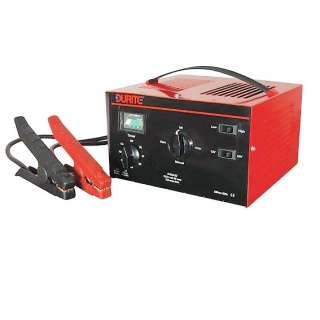
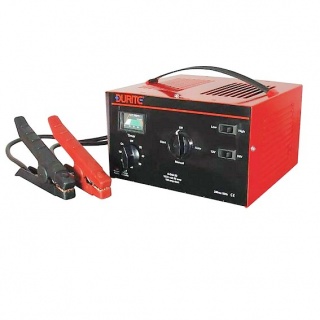
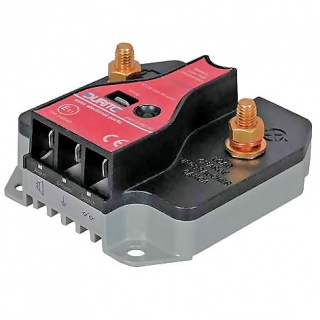
.jpg)
.jpg)
.jpg)
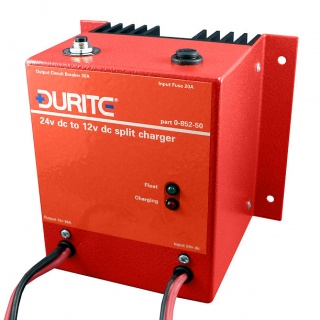
.jpg)
.jpg)
.jpg)
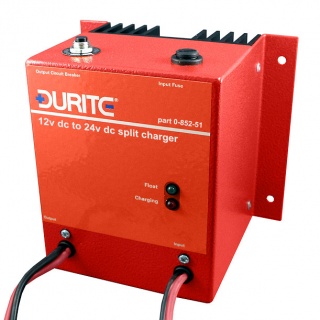
.jpg)
.jpg)
.jpg)
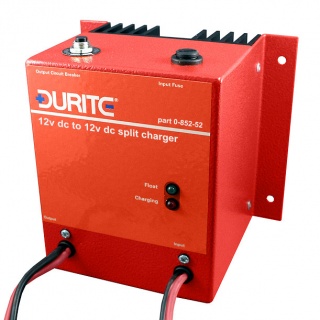
.jpg)
.jpg)
.jpg)